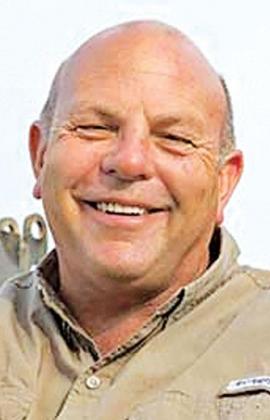
Zippy Duvall
Take a drive through Hamilton County, Kansas, population 2,500, and you know you are in the heart of rural America. Hamilton County has an abundance of many things — wheat, sorghum and dairy, for starters — but broadband isn’t one of them. And that’s a scary prospect when participation in the modern economy simply demands good internet service.
Policymakers, trade associations and private companies know this digital divide is a real problem and have supported commendable efforts to close gap. But there’s a catch for communities like Hamilton County. The county isn’t eligible for public funds to support broadband deployment and could be missed by private investment, too, because — according to the Federal Communications Commission — 100 percent of the county’s populations has access to broadband internet.
That’s news to most residents of Hamilton. In a recent report based on consumer usage data, Microsoft found that only 3.9 percent of Hamilton County residents, in fact, access the internet at broadband speed. My personal experience tells me Microsoft’s numbers are much closer to reality.
Republicans and Democrats agree that bridging the digital divide is crucial to America’s economic future, but we won’t get there unless we first know where the gaps are. The truth is the many public and private sector efforts to tackle this problem will suffer until we get a more accurate picture of which Americans remain on the wrong side of the rural broadband gap.
Each year, the FCC releases a “Broadband Deployment Report” that aims to show where broadband access exists, where it doesn’t, how many people have broadband access and how many people don’t. Federal officials use this report and a corresponding map to guide nearly every rural broadband deployment effort in the country. Even so, both sides of the aisle agree that these reports overstate broadband availability in rural areas.
The consequences of inaccurate broadband data can be enormous for rural communities. For example, the FCC’s reports are used to allocate billions of dollars in federal funding for loans and grants that support rural broadband deployment. Inaccurate data can lead to duplicative efforts in some communities and cause others to remain locked behind the digital divide.
Action to fix this flawed system should start with a document called “Form 477,” which is a survey sent to internet service providers (ISPs) each year to determine where they are offering broadband access. The data is aggregated by census blocks, and providers are asked if they “do” or “could” serve just one home or business inside of that geographic area. If the answer is yes, then everyone inside that given census block is effectively counted as having access to broadband.
In rural areas, census blocks can cover expansive geographic areas, but just a few hundred yards can make the difference between having broadband access and being left behind. There are more than 3,200 census blocks across the country that are larger than the District of Columbia, and five that are larger than Connecticut. Census blocks larger than two square miles comprise more than 64 percent of the U.S. land area, which means that every rural area is impacted by this problem in some way. Furthermore, just because a provider believes it could serve a census block, it doesn’t mean it is providing service there.
Clearly, this is a flawed means of measuring the digital divide. The reports so clearly overstate broadband coverage that U.S. Agriculture Secretary Sonny Perdue recently described them as “fake news.” Hamilton County and the countless other rural areas that the FCC claims to have universal broadband access are counting on action.
Zippy Duvall is the president of the American Farm Bureau Federation and a third-generation farmer from Georgia.
